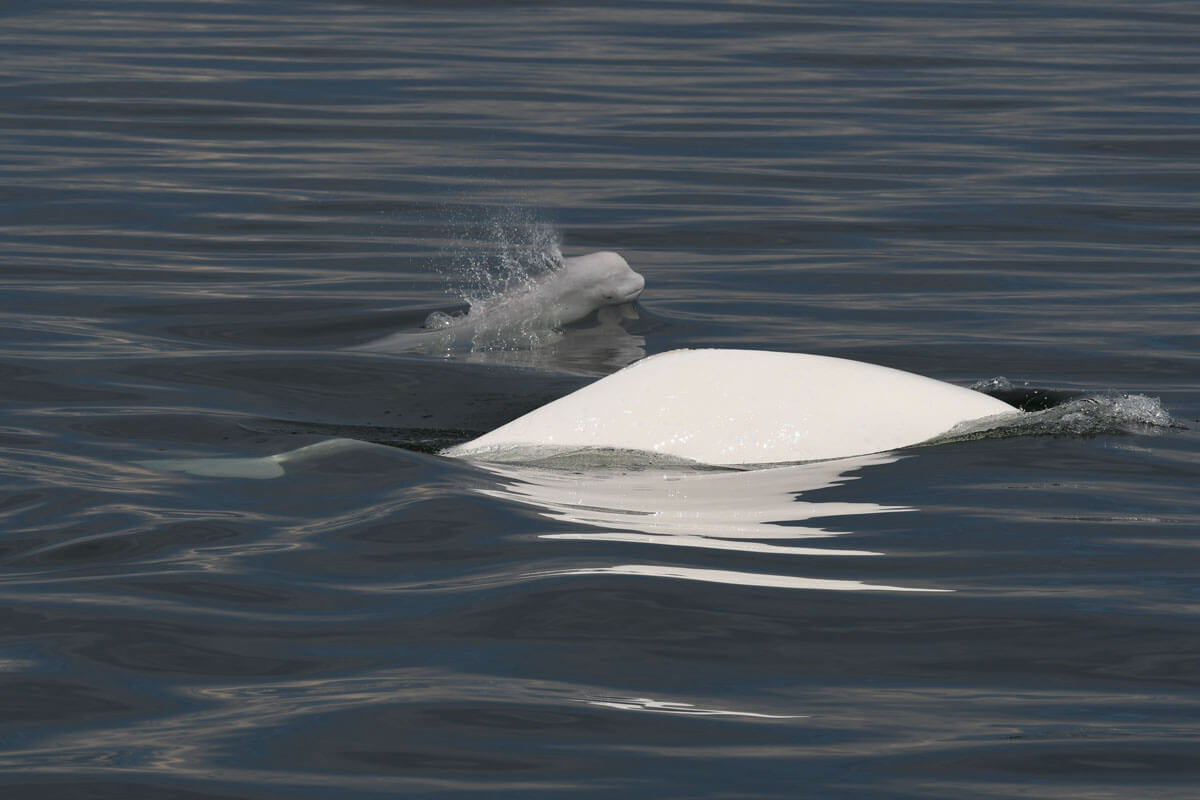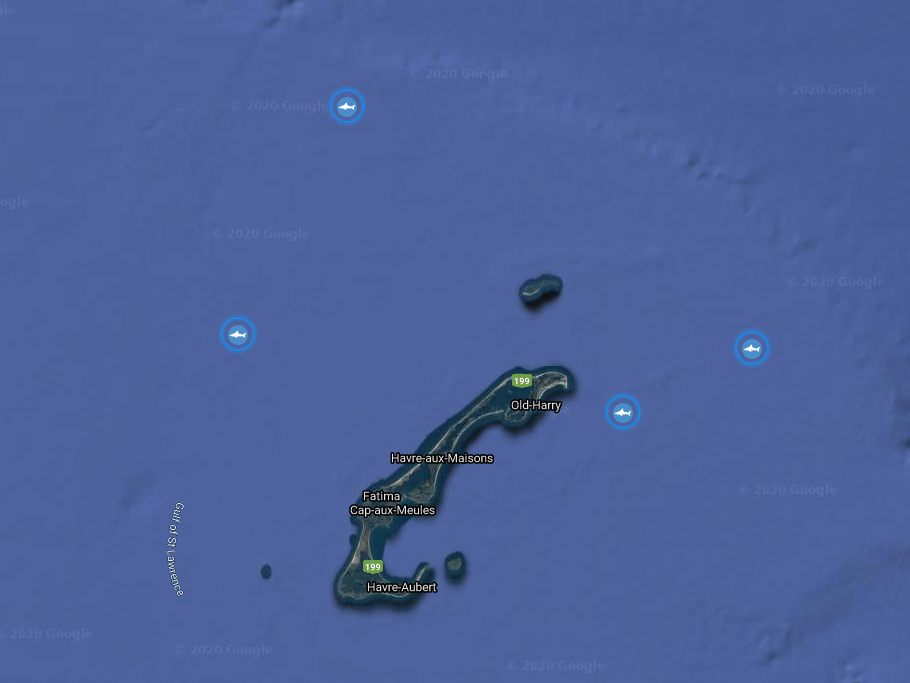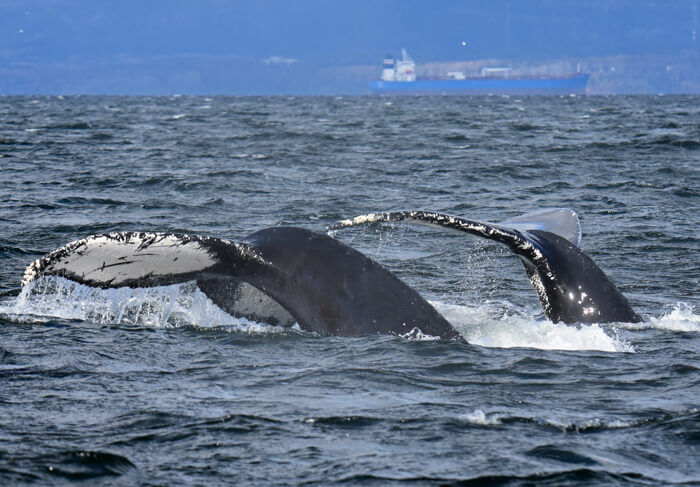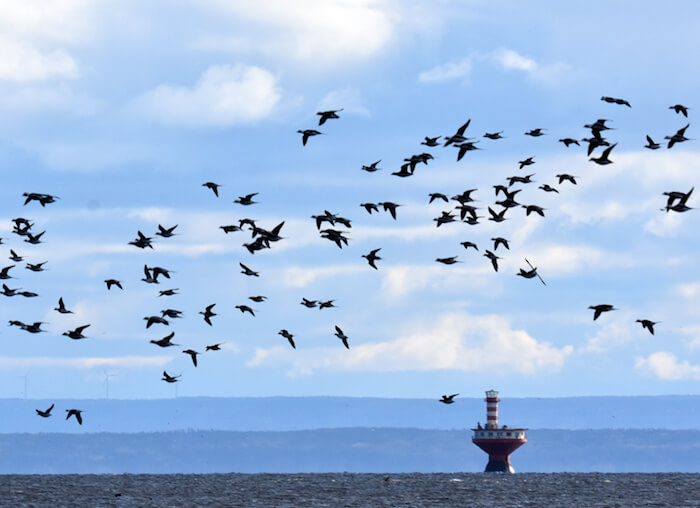A white beluga swims with a darker-skinned beluga at its side. Most likely a mother and her calf. The two shades of their backs contrast with the slate-coloured river. “In these difficult times, you have to cling to beauty,” correctly notes an observer from Anse-au-Sac in Saint-Irénée, who particularly appreciates this duo. “I don’t observe belugas every day, and rarely do I see them in large groups, so when I see a mother and her offspring like this without even having to lift my binoculars, what a joy!”
The joys of whale watching also lift the spirits of Renaud Pintiaux, who is out on the water on October 25. He sets sail from the Tadoussac marina with the rising tide. He encounters no fewer than nine fin whales, including Bp955 (a.k.a. “Ti-Croche”) and Bp903. “And there were other spouts off in the distance,” he adds. Fin whales are feeding not far below the surface. Opportunistic birds take advantage of the “crumbs”, i.e. those fish that have escaped the gulps of the whales.
Off the coast, snow begins to swirl. Four humpback whales come together. “This is a first for me, photographing humpbacks in the snow!” Wrapped in their massive layer of blubber, the humpbacks probably did not even feel the flakes landing on their backs. But tumbling air and water temperatures may cause the whales to embark on their migration before the first ice appears.
A few humpbacks are also observed near Port-Cartier. Also plying these waters are blue whales and fin whales. “But I’ve been seeing fewer and fewer minke whales,” notes Jacques Gélineau. It must be said that observations have also been rather complicated. Snow, cold, and shifting winds made several days too dangerous to operate small watercraft, or shrouded the horizon, rendering whale watching from shore next to impossible.
In Quebec’s Basse-Côte-Nord region, a fisherman crosses paths with two minke whales, one of which is significantly smaller than the other. Both of them are swimming dynamically. “On my fish finder, I could see clouds of krill. I saw a lot of mackerel, and the cod I caught were spitting up little capelin.” Hello food! Minke whales can feed on krill or small fish. Were they cashing in on both at the same time? For the fisherman, in any case, it was a good harvest, both for fish and for whale sightings!
Heavyweights in the Magdalen Islands
At least one North Atlantic right whale was detected by Fisheries and Oceans Canada buoys on October 23 at the western tip of Anticosti Island and on October 25 off Percé. These “Viking”-type buoys are equipped with hydrophones that capture the calls of the whales. The whale detections are then confirmed by scientists at Fisheries and Oceans Canada. This way, whales can be spotted without having to fly a plane or charter a boat.
Other North Atlantic right whales were spotted during aerial surveys on October 26 off the Magdalen Islands. Have these cetaceans noticed the presence of great white sharks in these parts? In any case, the Ocearch team has received the positions of sharks Breton, Jefferson, Mahone and Vimy. Ocearch fits sharks with satellite tags to track their movements and better understand how they use the territory. What brought these great white sharks so far north? Perhaps it was the huge seal colonies or massive bluefin tuna that got their mouths watering. Figuratively of course, since sharks, like whales, have no saliva glands!









